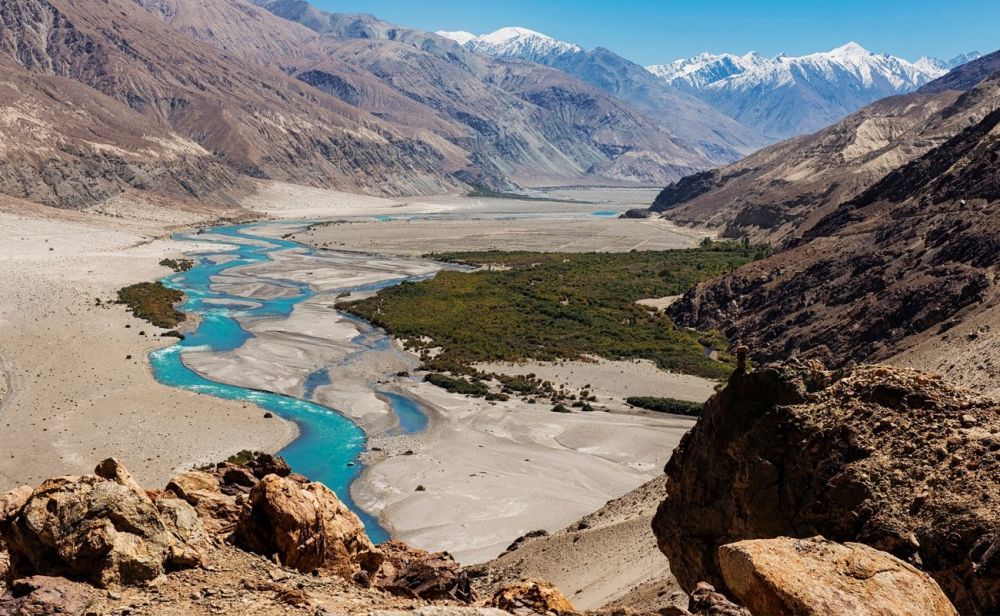

The remote and stunning landscape of the Nubra Valley, traversed by the meandering Shyok River, has long been a site of fascination and spiritual significance. Despite its isolation, Ladakh has drawn intrepid travelers and traders for centuries, with tourism in the region experiencing a boost after India gained independence in 1947.
The history of human activity in the Nubra Valley can be traced back to the caravans of the ancient Silk Road that passed through this region, connecting the Far East with the Middle East and Europe. However, it wouldn't be until the late 20th century that the region would start to emerge as a tourist destination. The Shyok River, known as the "river of death" in the local language due to its treacherous currents, has always been a lifeline for the communities living in its vicinity, supporting agriculture and trade.
For many years, the Nubra Valley was a restricted area due to its strategic border location close to both Pakistan and China. It wasn't until the 1990s that the Indian government relaxed travel restrictions, allowing visitors to explore the beauty of Ladakh and the Shyok River. When these restrictions were lifted, visitors began to trickle in, attracted by the high-altitude desert's stark beauty, the unique culture of its inhabitants, and the promise of adventure.
In the past few decades, Ladakh, and consequently the Shyok River and Nubra Valley, have become well-known destinations for tourists seeking both tranquility and adventure. The area's tourism infrastructure has developed, with guesthouses, adventure tour operators, and transport services making the region more accessible to outsiders. Tourists come to marvel at the breathtaking landscapes, partake in trekking and camping expeditions, and immerse themselves in the rich Buddhist heritage of the region.
Recently, there has been a significant shift towards sustainable and responsible tourism in Nubra Valley, with a focus on preserving the natural environment and local cultures. Travelers are encouraged to practice eco-friendly habits and support local communities through community-based tourism initiatives. There is also a growing trend for experiences that offer cultural exchange, such as homestays with Ladakhi families and participating in village life.
Adventure tourism continues to be popular, with the Shyok River offering opportunities for river rafting and kayaking. Motorcycle and bike tours along the rugged terrain are a favorite among thrill-seekers. Additionally, there's a growing interest in astrotourism, as Ladakh's high altitude and clear skies provide some of the world's best conditions for stargazing.
The unique beauty of Shyok River and Nubra Valley continues to attract visitors from around the globe. Despite the challenges posed by its remote location and the harsh environment, Ladakh has managed to carve out a place for itself on the global tourism map. Whether for adventure, tranquility, cultural engagement, or simply to experience the awe of its landscapes, the history of tourism in this part of India is still being written with each visitor's journey.